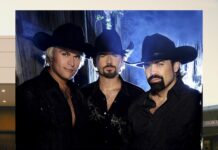Culture explains how people think, talk, and act in an organization (Trice & Beyer, 1993; Campbell & Gortiz, 2013). It defines what is acceptable and what is not (Bacharach, 2014). It either helps or hurts the organization’s ability to achieve its mission, vision, goals, and objectives. It’s more powerful than policy, procedures, training, or other tools which seek to influence employee thinking and behavior. Culture is how we do business here. It is the personality of the organization (Oden,1997).
If it is not written down, it’s not culture. Organizations should clearly articulate their values and expected attitudes and behaviors of members (Booz, Allen, & Hamilton, 2024). For example, the Ritz-Carlton Hotels use all of their communications channels to convey the standards, motto, values, expected behaviors, and commitments of members of their team.
Successful organizations have a single, clear, consistent, and comprehensive culture which helps them attract and retain the right people and achieve their mission, goals, and objectives. Culture involves shared values, vocabulary, and behaviors (Kotter, 2012).
Subcultures or mixed cultures are a problem. They create conflict and confusion and undermine unity and performance (Winkler, 2013).
Who is responsible for the culture in your company, government agency, or non-profit organization? The leadership has this all-important obligation. They create and sustain the right or wrong culture. Leaders must be intentional, pro-active, and consistent when it comes to culture. If leadership does not act, the organization will still have one or more cultures as employees create their own.
Leaders have to communicate, model, reward, recognize, and employ every tool in the toolbox to obtain and maintain the right culture. Recruiting, hiring, onboarding, evaluation, training and promotions are most likely to result in the intended culture. Culture is hired. When it’s irrefutable that someone rejects the culture, they cannot stay with the organization.
Different organizations are known for their cultures. For example, a company may lead a market through its culture of customer service. Similarly, when an organization has major problems like an ethical scandal it can always be traced back to its culture.
Incentives and disincentives are key to culture. The thinking and conduct which is rewarded will be reinforced, repeated, and replicated. Counter-culture attitudes and actions are not only unacceptable, but they are also unthinkable (Watkins, 2013).
Changing a culture is possible but challenging. Leaders must be determined and disciplined about attaining the right culture. Leaders have to be the example others emulate and employ every tool and resource to ensure the new culture is adopted and embraced. It is a long-term process, but it can be done (Kotter, 2012)
Tony Hsieh once observed that if you get the culture right, everything else pretty much takes care of itself. Culture will always decide if an organization excels, is mediocre, or ends in failure or obsolescence (Lencioni, 2012, Abrashoff, 2002, Maxwell, 1998, Collins, 2001).















































